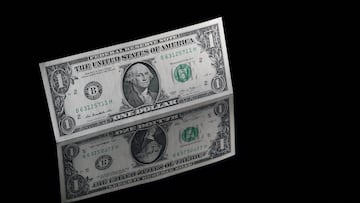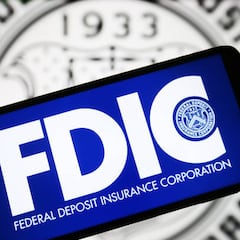Can the SVB collapse affect you if you don’t have an account?
There is concern that the failure of Silicon Valley Bank could cause a wider banking crisis. However, Biden assured Americans that their deposits are safe.

It’s been a rough few days for the banking industry with the largest bank failure since the 2008 crisis, and the first since 2020, occurring on Friday. Silicon Valley Bank, the sixteenth largest bank in the US, was taken over by regulators just 48 hours after depositors began removing their funds en masse.
On Sunday, while announcing emergency measures, the Biden administration said that Signature Bank had been closed as well. However, to prevent further contagion from the evolving banking crisis US banking regulators in a joint statement said that all deposits at the failed financial institutions would be made whole.
The emergency measures though haven’t had the complete calming effect on investors that was hoped for. The collapse of SVB has sent shockwaves through the banking sector and a wave of customers have applied to have their accounts moved to larger financial institutions from smaller lenders. But just how safe are depositors’ savings at banks right now?
You may also be interested in: What to expect if your bank collapses
Can the SVB collapse affect you if you don’t have an account?
If you have less than $250,000 in a federally-insured bank account, like the majority of Americans, your money should be safe. That is the limit that the Federal Deposit Insurance Corporation (FDIC) covers per depositor, per ownership category, per FDIC bank.
So if you have accounts in more than one ownership category you may be eligible for more than the current minimum of $250,000 in protection at a single FDIC-insured bank. Should you have money at another FDIC-insured bank, you would also be eligible for the minimum coverage for that institution too, even if you already had to file a previous claim at a different failed bank.
Why were emergency measures taken for Silicon Valley Bank?
While Silicon Valley Bank is not considered a systemic risk to the US banking system the Biden administration moved quickly to shore up confidence in the sector over the weekend. President Joe Biden gave a press conference on Monday morning to reassure the American public that their money was not at risk. “Americans can have confidence that the banking system is safe. Your deposits will be there when you need them,” he said.
One of the measures announced for SVB and New York-based Signature Bank customers is that their deposits will be made whole, even above the $250,000 limit. In the case of Silicon Valley Bank, whose clientele consists of tech start-ups and venture capitalists, over 90 percent of deposit accounts exceeded the FDIC cap. The money for this will come out of a fund that banks pay into and not from taxpayers.
Small businesses across the country that had accounts at Silicon Valley Bank and Signature Bank can breathe easier knowing they will be able to pay their workers.
— President Biden (@POTUS) March 13, 2023
It won't cost taxpayers a dime.
This is paid for with the fees that banks pay into the Deposit Insurance Fund. pic.twitter.com/1rv949k3X5
New government program to support bank balance sheets
Another measure implemented was the creation of lending facility for the nation’s banks to help buttress their balance sheets. Part of the reason there was a run on SVB was a financial maneuver to sell $21 billion in bonds at a loss of $1.8 billion in addition to $2.25 billion in convertible preferred stock. The two moves prompted clients to worry about the financial stability of the financial institution and secure what money they could before a potential implosion.
Related stories
Silicon Valley Bank is not the only institution which holds government securities on their books that are currently worth less than they would be due to higher interest rates and are know as “unrealized losses”. If those bonds were held until maturity there would be no loss, but selling them early means they get reported at a loss.
According to the FDIC, there is roughly $620 billion industry-wide in unrealized losses due to bonds on their books. Banks will now be able to receive a loan from the new program for up to a year on the original value of the government securities, helping them to potentially avoid reporting any loss on them for at least a year.


